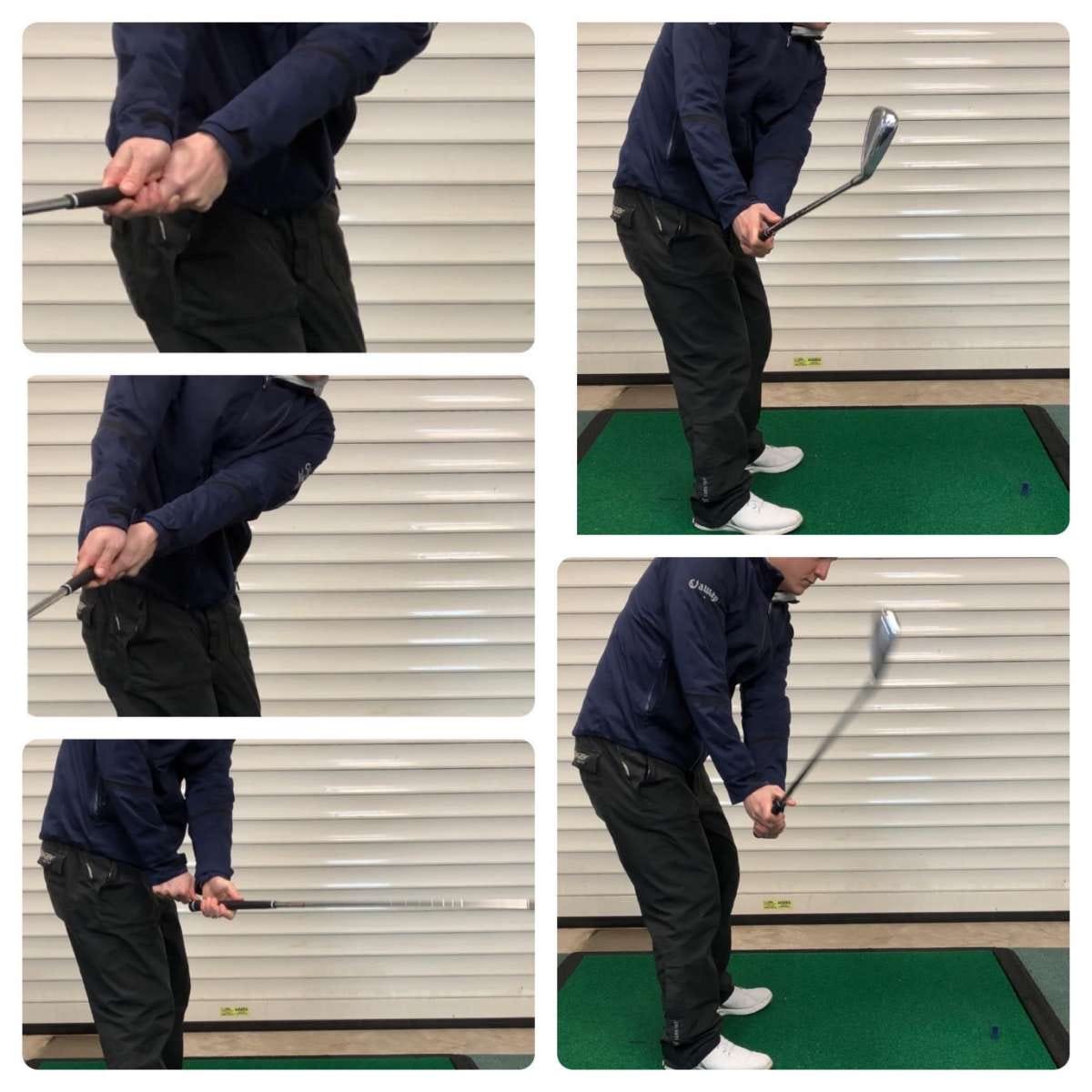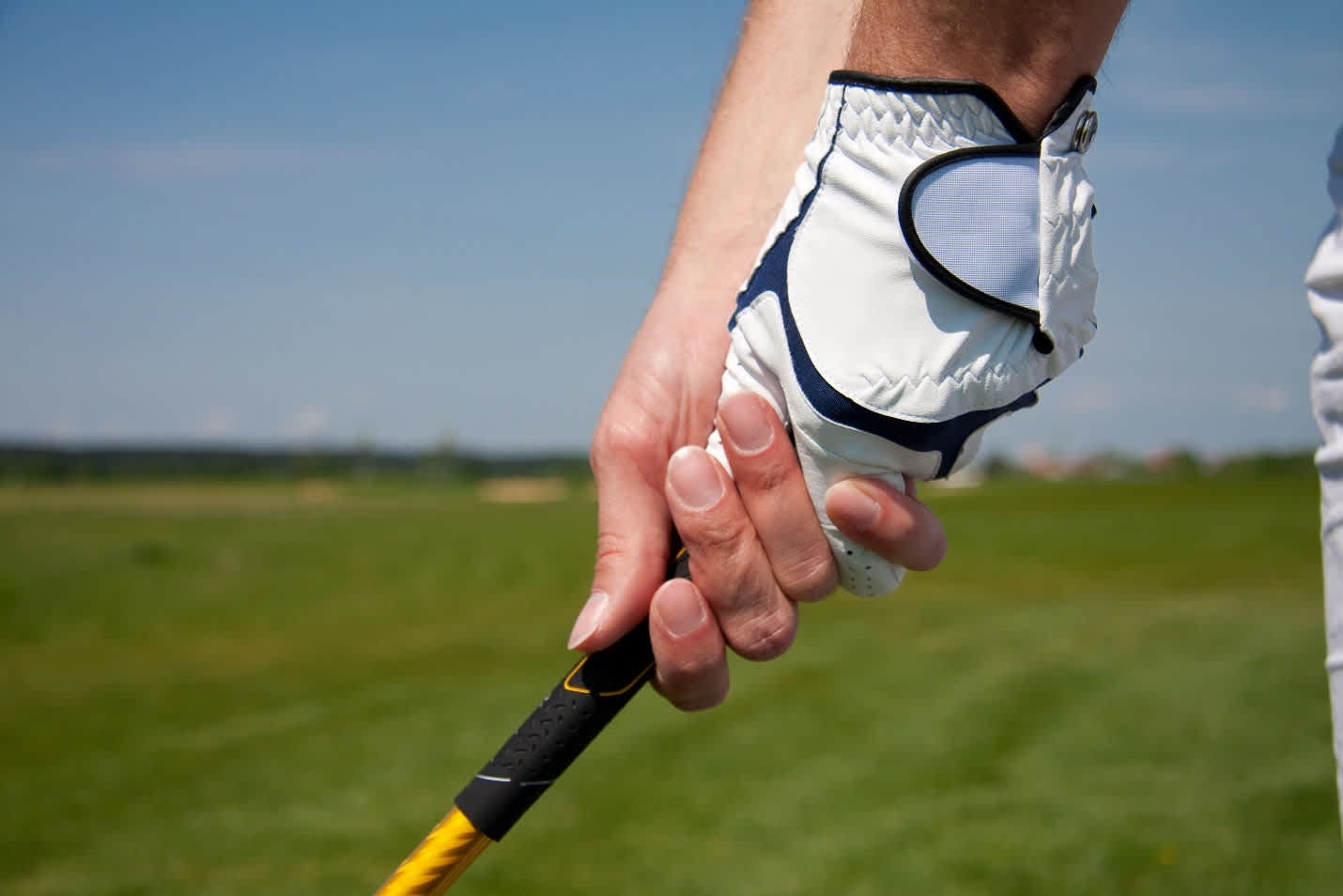According to swing analysis data from over one million golf swings, 90% of golfers fail to hinge their wrists correctly. This makes it the single most common technical flaw that keeps players stuck at the same handicap for years.
The average golfer spends 7-10 years hitting inconsistent shots before discovering what actually causes proper contact. It means most players waste nearly a decade of frustration that could be solved in a single practice session.
Here’s the one fundamental often separates players who improve from those who stay stuck.
The secret isn't in complex swing theories or expensive equipment. It's in understanding proper wrist hinge.
Most weekend golfers struggle with the same issues: inconsistent contact, lack of distance, and frustrating fat or thin shots that often lead to common slice problems that plague amateur golfers.
The solution lies in mastering a movement so subtle that many miss it entirely, yet so powerful it can transform your game overnight.
The Hidden Truth About Wrist Hinge
The biggest misconception about wrist hinge comes from watching golf on television.
When you see professionals in slow motion, their wrist action appears to move horizontally around their body. This visual trick has misled countless golfers into the wrong technique.
The reality is that proper wrist hinge moves in a vertical plane, up toward the sky, not around your body.
Think about throwing a ball or swinging a hammer.
You don't cock your wrists sideways, you hinge them up and down. Golf works exactly the same way.
This vertical motion creates the leverage needed for consistent contact and increased power. When done correctly, it produces clean divots after the ball, better distance control, and the kind of ball-striking consistency that makes golf enjoyable.
The Simple Technique That Works
Many golfers struggle with complex wrist explanations. This technique cuts through the confusion that traps so many players in endless practice without progress.
The most effective way to develop proper wrist hinge involves what many call the "pinky pressure method". This technique eliminates confusion and creates the right feel immediately.
Here's how to apply this method:
Set up with your normal grip - Ensure your hands are positioned correctly in your fingers, not your palms
Apply gentle pressure with your pinky finger - This creates natural leverage and encourages proper hinge
Feel the club hinge upward during takeaway - The pressure should feel like pushing down while the club goes up
Maintain consistent pressure throughout your swing - Never release this pinky pressure
The beauty of this technique lies in its simplicity.
Instead of trying to manipulate multiple moving parts, you focus on one pressure point that automatically creates proper wrist action.
Golfers who try this pinky pressure technique typically notice the difference within just a few practice swings. Many describe it as finally understanding what their instructor meant when they said 'hinge your wrists.'
Essential Practice Drills for Faster Results
The Hammer Drill
Imagine hammering a nail into the ground.
Hold your club like a hammer and practice the up-and-down motion without rotating your wrists horizontally. This drill builds the correct muscle memory for proper hinge.
The Wall Practice
Stand with your back against a wall and take your backswing without hitting the wall.
This forces proper wrist hinge while preventing the club from going too far inside. The constraint naturally teaches correct positioning.
The Coat Hanger Visualization
Picture holding a coat hanger with the hook pointing away from you.
During your backswing, keep that hook pointing toward the sky, not back parallel to your swing path. This mental image helps maintain proper plane.
Common Mistakes That Kill Progress
Hinging Too Early
Many golfers cock their wrists immediately at takeaway.
Instead, let the hinge develop gradually as your arms reach waist height. Early hinging leads to steep swings and poor contact.
Incorrect Grip Position
Gripping too high on the tapered part of the club eliminates the leverage needed for proper hinge. Stay in your fingers, not your palms, to maintain control and power.
Excessive Force
The harder you swing, the more likely you are to lose proper wrist action.
Start with 80% effort and focus on solid contact before adding power. Consistency beats distance every time.
Neglecting Fundamentals
Wrist hinge cannot fix a fundamentally flawed setup, so make sure you have the essential equipment properly fitted before working on advanced techniques.
Smart Practice Strategies
Effective practice requires structure and focus. Here's a proven routine that maximizes your range time:
Warm-up Phase (5 minutes)
Make slow practice swings focusing only on pinky pressure
Feel the natural hinge without hitting balls
Gradually increase swing length while maintaining the feeling
Technical Work (15 minutes)
Hit 10-15 balls with wedges using the pinky pressure technique
Progress to mid-irons, then longer clubs
Focus on contact quality, not distance
Integration Practice (10 minutes)
Play imaginary holes using different clubs
Maintain the same wrist hinge feel for every shot
Practice your pre-shot routine with the new technique
Taking It to the Course
The biggest challenge isn't learning the technique. It's executing it under pressure after years of ingrained bad habits, which is why strong mental game strategies becomes key for consistent performance.
Here are proven strategies to make your practice stick when it counts:
Start with Low-Pressure Situations
Practice the technique on easier courses where you feel more relaxed. Confidence builds from successful repetition in comfortable environments.
Use Pre-Shot Routines
Incorporate the pinky pressure feel into your pre-shot routine. This creates consistency between practice and play.
Focus on Process, Not Results
Commit to the technique regardless of immediate outcomes. Trust that proper mechanics will produce better results over time.
The Science Behind Better Ball Striking
Proper wrist hinge creates measurable mechanical advantages based on fundamental physics principles:
Lever Arm Physics
When you hinge your wrists correctly, you create a shorter lever arm during the backswing, which allows faster angular velocity.
This shorter radius reduces the moment of inertia, making it easier to accelerate the club through a longer arc with less muscular effort.
Energy Storage and Release
The wrist hinge acts like a compressed spring, storing potential energy during the backswing.
Research shows that elite golfers demonstrate more precisely timed wrist movements that contribute directly to higher clubhead speeds at impact.
This stored energy releases through the impact zone, transferring maximum kinetic energy to the ball.
Angular Acceleration Benefits
The physics principle of angular momentum (L = Iω) explains why proper wrist hinge generates more clubhead speed.
Creating the correct lever system helps you increase the angular acceleration of the clubhead while maintaining control.
This is why you can generate more distance with less effort.
Impact Dynamics
Studies published in the Journal of Sports Sciences confirm that the timing of wrist uncocking in the downswing significantly affects energy transfer and ball speed.
The vertical hinge plane ensures that maximum force transfers directly through the ball at impact, rather than being lost through incorrect clubface angles.
Understanding these physics principles helps explain why proper wrist hinge consistently produces longer, straighter shots with better ball compression.
It's not just technique, it's applied physics working in your favor.
Advanced Applications
Once you've mastered basic wrist hinge, you can apply these principles to specific situations while ensuring you're carrying the right tools for every situation in your golf bag:
Driver Technique
The same vertical hinge works for your driver, but with slightly different timing. Focus on maintaining the pinky pressure while allowing for the longer swing arc.
Short Game Applications
Proper wrist hinge improves wedge play and chipping consistency, and when combined with proven putting fundamentals, creates a complete short game transformation.
Troubleshooting Common Issues
If you're still struggling with thin or fat shots, check your grip pressure and hinge timing. Most problems stem from rushing the movement or applying too much force.
The Path Forward
Mastering wrist hinge isn't about perfect technique.
It's about understanding simple fundamentals that actually matter. This movement separates players who improve consistently from those who plateau.
The key is patience and deliberate practice. Don't let this become another technique you try for a few swings and abandon.
Most golfers who finally break through their ball-striking plateau do so because they commit to one method rather than jumping between endless tips.
Give this technique focused attention for just one range session. Start with the pinky pressure drill, feel that natural hinge, and watch your ball-striking transform.
Even professional golfers continue working on these fundamentals, and understanding realistic expectations for your skill level helps maintain motivation during the learning process.
Wrist hinge represents one of those basics that can level up your entire game.
Your next breakthrough is waiting at the practice range. Focus on the pinky pressure, trust the process, and prepare to experience golf at a whole new level.
I hope that helps,
—Hakan
Founder, ParTalk.com | X/Twitter: ParTalkGolf | Instagram: @golfingphoto



